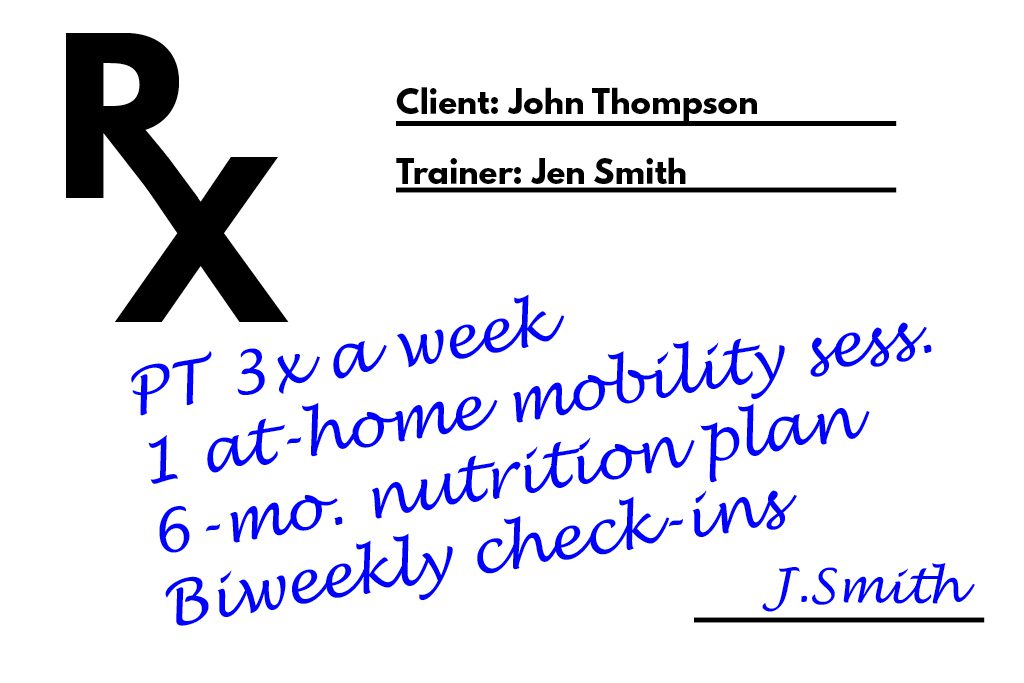Good fitness coaches know how to help clients reach their goals.
They start with the goal. Let’s call that “Point B.”
Then they measure the starting point. Let’s call that “Point A.”
Slowly, they map the path backward from Point B to Point A.
In the previous post in this series, I shared a video to help you map the process for your clients. If you missed it, watch it here.
After they’ve mapped the process, great coaches prescribe the fastest path to their clients. Like this:
“Well, Alice, here are the steps you’ll need to take to reach your goal. To get there quickly, you’ll need to exercise five times per week and follow a clear nutrition plan. How does that sound?”
Then they overcome barriers, such as price objections or injuries. Like this:
“No problem. If you can’t afford to move that quickly, we’ll take it a bit slower. With the budget you just gave me, I’d say we should train twice per week and really focus on that nutrition plan.”
Or like this:
“No problem. Your back is tight from work. We’ll take it a bit slower at first. With the limitation you just gave me, I’d say we should train three times per week and have one specific mobility session per week instead of four workouts.”
Then they motivate clients by reminding them of their wins, showing them their progress and calling them when they don’t show up.
Along the way, they track progress, and adjust the plan—because no plan survives first contact with the enemy. And the enemies (Big Sugar, Netflix and cortisol) are pretty good at this game. So Two-Brain gyms meet with their clients every quarter to adjust their plans.
But no one loses sight of the goal. The coach can’t afford to because the client never stops thinking about it. Clients don’t do your workouts for the sake of being good at your workouts; they do them because they want to achieve their real goal. And they’re willing to trade short-term pain to get there—if they trust their coach.
We call this The Prescriptive Model. Here’s an early podcast we did on the subject: Two-Brain Radio. But I walk through it step by step in my latest book, “Founder, Farmer, Tinker, Thief.”
Great coaches don’t sell group programming. Great coaches sell 1:1 relationships, sometimes delivered in a group.
We can do the same for business. In the next post, I’ll tell you how we do it.
Other Articles in This Series
How to Achieve Any Goal
How to Solve Any Problem in Business
The Two-Brain Wealth Map
Mentors: Teachers, Guides and Therapists

